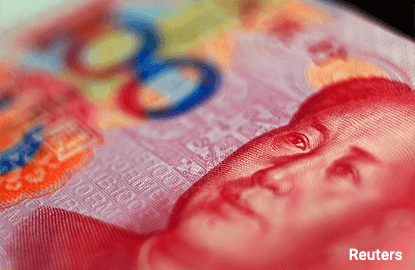
CHINA’S National People’s Congress (NPC), which concluded on Wednesday, did not do much to ease the main worry about the world’s second-biggest economy: its large and growing pile of debt. In fact, to keep gross domestic product (GDP) growth ticking over at 6.5% or more, Chinese Premier Li Keqiang pledged a 12% expansion in credit this year. That implies about US$2.7 trillion (RM11.96 trillion) in new lending — larger than the UK’s GDP.
That is not as troubling as it sounds, however. The reality is that China is a big economy, with a substantial stock of existing borrowing and a valid need to borrow more if it is to prevent demand sputtering out. No one should be surprised China’s borrowing needs in 2017 look to be immense. They will be even larger in 2018, and bigger still in 2019.
Indeed, it would be more worrying if China suddenly stopped borrowing so much. True, Chinese leaders should kick the habit of rolling over non-performing loans and instead kill off more zombie companies, especially in the state sector. Shock treatment, however, would not result in a more dynamic industrial sector or more efficient banking system. More likely, a sudden halt to lending would lead to an economic collapse and financial meltdown — with global implications.
As People’s Bank of China (PBoC) deputy governor Yi Gang noted on the sidelines of the NPC, before China can deleverage it first needs to stabilise leverage. Whether or not it is doing so is the relevant metric to judge China’s progress. And against that yardstick, it is not doing that badly.
At the end of 2015, credit growth was expanding about 14.4% a year. Nominal GDP growth measures the economy’s ability to generate income to repay borrowing. Back then, with China in a deflationary slump, nominal growth came in at just 6.4%. In other words, China was taking on credit more than twice as fast its ability to repay it — an unsustainable trajectory.
Now, though, the picture looks a little less bleak. While credit growth had edged above 15% by the end of last year, nominal GDP growth had accelerated to 9.6%. Such a path is still unsustainable, but less so than before. In 2017, with producer prices rising at a rapid clip and monetary policy a shade tighter, it is likely nominal growth will be a little faster and credit growth a little slower.
To put it another way, the big message of the NPC is not that China’s doubling down on an unsustainable strategy. It is that the economy’s debt load may be edging toward a more manageable trajectory.
To be sure, plenty could happen to knock China off course. At home, a slowing real estate market could eat away at demand. Auto sales have swung into reverse, after the government lifted tax incentives for buying new cars.
And the real risk comes from a man that had to wait until the end of the NPC for a mention: US President Donald Trump. In his closing press conference, Li noted the potential costs of a trade war and expressed confidence that one could be avoided.
In the still-early days of the new US administration, there are many hints about the direction of China policy, but little certainty. Not all scenarios are unfavourable. The US economy is already running hot, for instance, with unemployment back to pre-crisis levels. If a trade war is indeed avoided, US demand should drive stronger Chinese exports. While the US Federal Reserve’s (Fed) rate hike and a strong dollar would make it harder to handle the yuan, those stresses would be bearable as long as exports continue to prop up growth.
Other possibilities are darker. A Trump administration could impose comprehensive controls on China’s exports. In an extreme scenario, the 45% tariff Trump touted on the campaign trail would hammer China’s overseas sales and knock 0.7 percentage point off GDP growth. To offset that, the government would have to expand credit even more than it already is. And even if that extreme threat never materialises, US policy could still turn Chinese exports from a growth boost to a burden.
Add Fed tightening to the equation and the stresses on China could really pile up. The PBoC would face an unpalatable choice. It could raise rates to offset a falling yuan, further undermining the real economy. Or it could keep rates low to buoy growth, at the risk of a sliding yuan and renewed capital outflows. That would drain funding from the financial system.
The buzzword for China’s leaders in 2017 is stability. Despite some scary credit numbers, the current trajectory puts them on track to achieve it. Trump, though, could still blow China off course. — Bloomberg